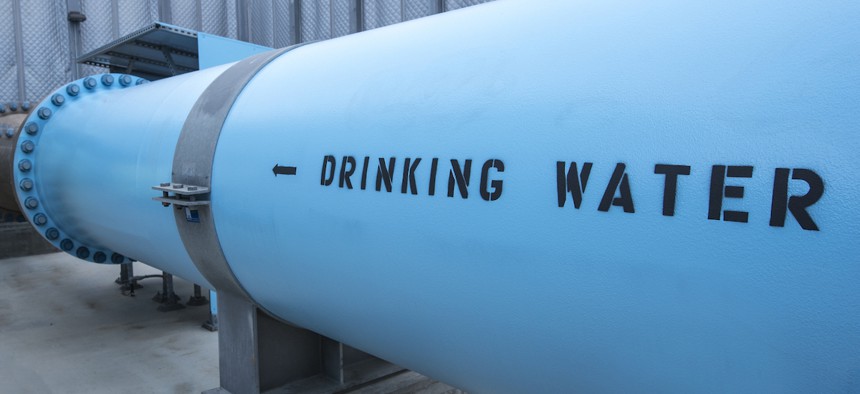Innovative water treatment tech could help remove forever chemicals

Reed Kaestner via Getty Images
The Tampa Water Department is exploring suspended ion exchange technology as a way to address PFAS contamination to meet new federal standards.
The new year will ring in new water safety regulations for public water systems as the Environment Protection Agency is expected to finalize the first national drinking water standard in early 2024.
The federal standard will establish maximum contaminant levels of per- and polyfluoroalkyl substances, or PFAS, in public drinking water supplies. Currently, the proposed limit for the most common types of PFAS is four parts per trillion.
To put that into perspective, one part per trillion is about the equivalent of a single drop of water in 20 Olympic-sized swimming pools, said Sarah Burns, capital improvement program director for the Tampa Water Department in Florida.
Water from more than 33% of Florida’s treatment facilities exceed the EPA’s limit, and like many water authorities across the country, the Tampa Water Department has had to scramble to figure out how it can comply with the regulation, Burns said. Doing so has been “a challenge for drinking water providers,” who generally do not produce PFAS themselves but are tasked with removing and monitoring them anyway, she added.
PFAS chemicals are present in everyday items like cosmetics, diapers, nonstick cookware and takeout food packaging. They do not degrade or decompose, meaning once the chemicals are in the environment—or the human body—they’re there to stay. PFAS have been linked to health complications like cancer, fertility issues and asthma, among others.
To comply with the EPA’s rule and to improve the drinking water supply for residents, Tampa is testing innovative water filtration technology that could help boost the efficiency of the PFAS removal process.
Suspended ion exchange treats raw water by adding resin beads whose ions help remove organic matter like decaying vegetation from the water. That process effectively removes pollutants from the water, which can then be filtered further down the treatment process to remove PFAS, Burns said.
The suspended ion exchange process also reduces the amount of chemicals needed to treat water, Burns said. With the technology, the department will no longer require sulfuric acid and lime and can cut the coagulant it uses for water treatment by 70%.
That’s because suspended ion exchange, as the first filtration process, “works so well that all of the other processes downstream don’t need to work as hard,” Burns said.
Without it, the city “would have to build double the [water] filter capacity, and that would cost $250 million,” she said. Tampa also stands to save $1.4 million a year in chemical usage.
Installing the suspended ion exchange plant, however, will only cost Tampa $200 million and is designed to manage 140 million gallons a day. It will be built at the David L. Tippin Water Treatment Facility, with construction slated to start in 2028 and be completed in 2032. It will likely be the first suspended ion exchange plant in the U.S. and the largest in the world.
The Tampa Water Department is currently testing the technology at a wastewater treatment site, officials said in a statement. It was also piloted in 2020.
“We're beginning these tests to ensure that the downstream filters, once those organics are removed, will be able to take out PFAS,” Burns said. “We will likely have some upgrades we’ll need to make, and we might need some more operational changes, for example, changing out filter media more frequently. But getting these organics out is a huge step toward the solution.”
Other water treatment methods like granular activated carbon and membrane filtration are still widely used, but are costly. For public water systems and utilities looking to improve their treatment processes to comply with the EPA’s drinking water standard, watching Tampa’s suspended ion exchange implementation could be helpful, said Chris Moody, a regulatory technical manager at the American Water Works Association's government affairs office.
While suspended ion exchange isn’t “necessarily a game-changing technology solution,” he said, “it’s a significant development for Tampa because it’s going to [help] remove PFAS and it’s given them other benefits,” like cost savings.
The technology is “an innovative way to meet the [federal] regulation” that gives Tampa “the biggest bang for their buck,” Moody said, “because it’s an expensive infrastructure improvement at the end of the day.”






